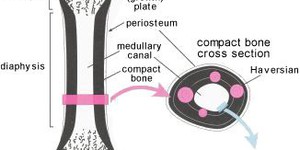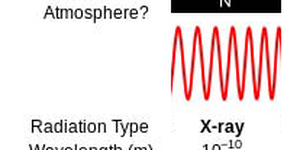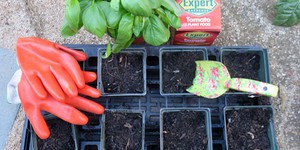Others Like “Lung Capacity and Age” (top 20 results)
|
Physical activity is needed for maintaining normal bone strength and mass. Can physical stress on finger bones during development lead to an increase in finger length? Check out this project to see how violin players are an example of a "natural experiment" that you can use to answer this question.
Read more
Have you ever wondered how X-rays affect living organisms? You have probably had X-rays taken at the dentist's or
doctor's office. These X-rays are considered to be relatively safe, but every X-ray exposes a person to some radiation,
specifically electromagnetic radiation. Radiation is energy that travels through space as either waves or high speed
particles. Watch this video to learn more about electromagnetic radiation.
When the energy in X-rays encounters an object, it can…
Read more
The ingredients in Alka-Seltzer® tablets undergo a chemical reaction that produces carbon dioxide gas as soon as the tablets hit water. Do you think you can cause the tablets to produce gas faster by breaking them into smaller pieces before dropping them in water? Find out for yourself with this project.
Read more
Plants need nitrogen to grow healthy stems and leaves. Although nitrogen is the most abundant element in the air we breathe, that form of nitrogen cannot be used by plants. Nitrogen contained in fertilizer, on the other hand, is readily taken up by plants. In this experiment, you will compare plants grown without nitrogen fertilizer to plants grown with nitrogen fertilizer.
Read more
One strategy you may have heard suggested for dealing with the COVID-19 epidemic is to let nature take its course and let COVID-19 infect enough of the population for us to reach the herd immunity threshold. Does this make sense as a public health strategy? You can explore this question scientifically using SimPandemic, a free online tool for modeling infectious disease outbreaks.
Before you begin, you will need to know a bit about herd immunity. Herd immunity, sometimes called community…
Read more
When you take medicine, it needs to dissolve in order to be passed into your bloodstream to have an effect. On the other hand, the drug needs to be packed into a small, dense pill to make it easier to swallow. How does the delivery method of a drug change how quickly it enters the bloodstream? Compare different brands of a drug to find out which brands dissolve the quickest. Does the pH of the stomach (which is usually between 1 and 2) matter? Compare coated to uncoated pills: does the coating…
Read more
Think about mountain ranges, canyons, sand dunes, or any other interesting geological feature you may live near enough to visit. The surface of the Earth is always changing due to a balance of forces both above and below the surface. Below-surface forces cause the Earth's crust to be faulted, folded, tilted, and lifted. Above-surface forces are primarily due to the natural processes of weathering and erosion. Can you show the effects of these forces using scale models, demonstrations,…
Read more
Leaves grow in a different pattern than stems and shoots. They do not elongate along one axis, but instead spread out over time. Do all regions of the leaf grow equally? You can use markings on different regions of a growing leaf to see if the whole surface grows, or if growth is focused in a particular region, like the veins or edges of the leaf. If you look along a leafy stem, you may notice that leaves at different positions along the stem are different sizes. You can do an experiment to…
Read more
Chlorophyll is a natural pigment found in green plants. It is the primary pigment that absorbs light energy from the sun for photosynthesis. This energy is then used by the plant to synthesize glucose from carbon dioxide and water. Chlorophyll in the leaves of plants can be extracted and separated using chromatography. A good source of chlorophyll for an extraction is a dark green leafy vegetable like spinach. Rub a fresh spinach leaf on the bottom of a strip of filter paper. You can get a…
Read more
Reclaimed (treated) wastewater can be used for many purposes, including landscape watering and freeing up valuable fresh water for other purposes (like drinking water). It's a great way to conserve water, but is it really safe? This science fair project is designed to find out.
Read more
|
Explore Our Science Videos
Raspberry Pi Adaptive Game Controller
How Much Weight Can Boats Float?
DIY Mini Drone Part 1: Build Your Drone











